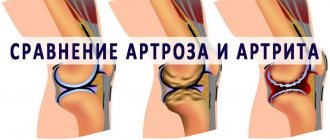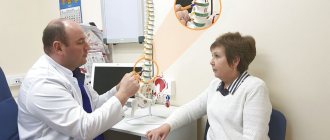Coughing with blood, hemoptysis - the release of blood from the internal organs that are part of the respiratory system (larynx, bronchi, lungs). It is characterized by streaks and inclusions in the total volume of sputum, and can also be present in all sexes (age category does not matter.) As a rule, the development of such symptoms may be associated with internal damage to the lung, which is caused by inflammation, infection, malignant neoplasm or injury , received quite recently.
1.General information
First of all, a few general words should be said about those situations when a person sees his own blood outside the body. If this is a medical procedure (for example, blood sampling for clinical analysis), or a superficial scratch (which, however, must also be aseptically treated to avoid infection), or menstrual blood in women (without any deviations from the established cycle) - worry, Of course it's not worth it.
But any other appearance of blood, even in small or barely noticeable quantities (any signs of hemorrhage, bleeding ulcers, “leaking” effusion, etc.) is in all cases a serious situation, requiring consultation, examination and medical intervention, and often ( depending on a number of circumstances), assistance should be provided not just “in the near future,” but on an urgent or emergency basis.
This is especially true for massive blood impurities in urine, feces or expectorated sputum: such phenomena never arise “just like that” - this is a symptom, and in medicine it is considered one of the most formidable.
Coughing up blood, tasting or having blood in the mouth can have many different causes.
Some of them may not pose an immediate threat to life and health. But this is one of those cases when it is definitely better to make a mistake like a “false alarm” by visiting or calling doctors “in vain” than to waste precious time and bring the situation to a critical or irreversible point.
A must read! Help with hospitalization and treatment!
First aid for hemoptysis
What to do if you cough up blood? First aid includes measures to stop hemoptysis and prevent bleeding. If the attack started at home, the first step is to call emergency medical help. The patient must be kept at rest. Give him a semi-strong position, or raise his head. The patient is not recommended to talk; breathing should be even. Unbutton your clothes, if you have dentures, remove them, open the window to ensure free access of oxygen. It is recommended to place an ice compress on the patient's chest, or encourage him to swallow ice cubes every 15 minutes. In case of severe overexcitation, taking mild sedatives is allowed.
The condition is dangerous and life-threatening, and therefore requires calling an ambulance. Regardless of the cause, hemoptysis is a symptom that requires urgent attention. If blood suddenly appears during a cough, it is important to conduct an examination and prescribe therapy as quickly as possible. This will not only save the patient’s life, but also prevent the development of serious complications.
2. Reasons
The most common cause of hemoptysis is diseases of the respiratory system. Here it should be remembered that a cough is a repeated spastic contraction of the respiratory muscles with forced exhalation (inhalation may be difficult and incomplete), most often caused by inflammatory, mechanical or chemical irritation of the upper respiratory tract - trachea, bronchi, larynx, as well as nasopharyngeal or pleural receptors.
Accordingly, infectious and inflammatory processes lead among the causes:
- tuberculosis;
- “smoldering” suppuration in pathologically distended incompetent bronchi (chronic bronchiectasis);
- some specific types of bacterial (less often viral) pneumonia;
- abscessing inflammatory process in the lungs;
- clinically significant bronchitis, acute or chronic.
The second most common group of causes are tumors, both malignant neoplasia in the lungs and benign formations in the bronchi (for example, adenoma).
Other reasons include:
- pulmonary thromboembolism (in turn, which can occur under the influence of various factors - thrombophlebitis, surgery, etc.);
- some types of severe cardiac pathology (rheumatism, congenital or acquired defects);
- trauma and/or foreign body in the lungs;
- diseases of the upper gastrointestinal tract;
- some genetic, autoimmune, idiopathic diseases (cystic fibrosis, Wegener's granulomatosis, hemorrhagic diathesis, pulmonary hemosiderosis, etc.).
Finally, some sources emphasize that from five to fifteen percent of cases of coughing up blood remain etiologically unclear, i.e. the cause is not identified even with a comprehensive examination.
Visit our Pulmonology page
Which doctor should I go to?
If you are coughing up blood or have green or yellow sputum, you should visit a therapist. He will conduct an initial examination and write out directions for tests. Based on the results obtained, consultation with a cardiologist, pulmonologist, phthisiatrician, or oncologist may be required.
If you experience frequent hemoptysis, you should visit a physician.
The causes of coughing up blood are different, so if unpleasant signs appear, you should not panic or make fatal diagnoses. Only a specialist can identify the cause of the pathology after a comprehensive examination.
3. Symptoms and diagnosis
A productive cough mixed with blood can sometimes be confused with a variant of vomiting bleeding from the esophagus, as well as with some special variants of nosebleeds. It should be remembered that with “true” bronchopulmonary hemoptysis, the admixture of blood in the sputum is usually bright scarlet and foamy, while from the gastrointestinal tract (from the esophagus, ulcerated gastroduodenal areas) darker blood comes, as a rule, in clots and mixed with leftover food.
Thromboembolism usually develops acutely; coughing is preceded by rapidly increasing chest pain.
Stagnant or chronic purulent processes in the respiratory organs are often manifested by expectoration of “bloody” sputum with an unpleasant putrefactive odor, as well as general weakness, low-grade fever and other general inflammatory symptoms.
If coughing up blood is caused by cardiovascular pathology, the symptoms of this particular cardiac register may dominate: shortness of breath, cyanosis, hypertension, angina pectoris, etc.
In oncopathology, blood impurities usually have a thread-like form.
It is impossible to list all the methods used in diagnosing the causes of hemoptysis, just as it is impossible to give an overview of all options for further therapeutic (or surgical) actions. Most often, the examination begins with radiography, ultrasound, tomography, endoscopy (bronchoscopy, FGDS) and general clinical laboratory tests (primarily sputum, blood and urine). Depending on the specific circumstances and indications, an additional extended examination (biopsy, ECG, EchoCG, immunological study, coagulogram, etc.) may be prescribed.
About our clinic Chistye Prudy metro station Medintercom page!
Types of pulmonary hemorrhage
Since 1990, domestic specialists have used the classification of pulmonary hemorrhage into three degrees:
- First, A, B and C - successively from 50 to 500 ml of daily blood loss;
- Second, A and B - from 30 ml to 500 ml in an hour;
- Third degree, A and B - simultaneous outpouring of up to 100 ml of blood or more.
Tactics for different intensities of blood loss differ, and if the patient’s hemoptysis does not frighten the oncologist, although he makes adjustments to therapy, then bleeding from the lung requires urgent medical and resuscitation care.
Book a consultation around the clock +7+7+78
4.Treatment
Therapy in any case will be etiopathogenetic in nature (as far as possible), i.e. The main target will not be the cough itself, but the factors that cause it. The range of therapeutic approaches in modern pulmonology (and medicine in general) is extremely wide; their specific choice is determined by the diagnostic results. In some cases, standard anti-inflammatory treatment is sufficient, in others there are absolute indications for emergency surgery, etc.
It is important to emphasize once again: a doctor’s consultation is needed urgently or urgently if:
- “bloody” sputum expectorated with a cough is very copious and/or has a strong unpleasant odor;
- cough mixed with blood occurs against the background of “unreasonable” recent loss of body weight, hyperhidrosis (excessive sweating), fatigue;
- cough is accompanied by signs of pulmonary hemorrhage (profuse, frothy scarlet blood).
How does pulmonary hemorrhage occur?
In principle, hemoptysis is possible with any serious pathology of the lungs and even with banal bronchitis, with infections and heart diseases. But the cause of bleeding from the vessels of the pulmonary structures is most often malignant tumors of the bronchi. This is followed by primary tumors of the lung tissue itself and metastases into the lungs of malignant tumors of any organs. In every tenth patient with lung cancer, bleeding is the first obvious symptom of the disease, but on average, bleeding of varying intensity occurs in every fifth patient during the course of the disease.
In cancer, the cause of bleeding lies in a vessel corroded by the tumor. A cancerous tumor spreads into surrounding tissues, germinating them, replacing normal tissues with tumor ones. The bronchial wall is penetrated by vessels, which are also involved in the tumor; the tumor seems to “eat” them, forming a defect in the vascular wall, which is easily penetrated by the blood flow. The walls of the ruptured vessel cannot collapse because they are immobile due to the rocky density surrounding the tumor. The vessel gapes with its lumen, from it blood flows freely into the lumen of the bronchus and is thrown out by a cough reflex. The defect in the vascular wall may be tiny, but the larger the diameter of the damaged vessel, the more intense the bleeding.
Up to 80% of pulmonary hemorrhages meet the criteria of the first degree of severity. Massive bleeding, they are even called lightning due to the loss of blood “a mouthful”, is observed in only five out of a hundred, but only a few survive such bleeding. You are lucky if the bleeding happened in a hospital, because two thirds of patients die within the first hour from the onset of bleeding without medical assistance.
Any bleeding that occurs at home is a disaster; pulmonary hemorrhage is a terrible tragedy, because for such a case, urgent evacuation to a specialized intensive care unit is simply vital. Of the patients who reached a regular hospital, only a few also survive. And they die not so much from blood loss as from asphyxia - the filling of the pulmonary alveoli with blood flowing down the bronchi, which disrupts gas exchange, and without oxygen there is no life.
Treatment methods in Medscan
The choice of treatment methods depends on the disease that caused hemoptysis and the stage of its development. For malignant neoplasms in the lungs, the following are prescribed:
- early resection;
- chemotherapy;
- radiation therapy;
- immunotherapy;
- targeted therapy;
- stereotactic radiotherapy.
In case of massive bleeding, Medscan specialists perform embolization of the bronchial artery. This is a minimally invasive method that involves blocking a bleeding vessel. It allows you to stop blood loss in 90% of cases. If there is no effect, emergency surgery is performed.
Diagnostic measures
Sputum with blood is a manifestation of dangerous diseases that must be identified and eliminated in time. To do this, a comprehensive diagnostic examination of patients is carried out, based on the results of which adequate therapy is prescribed.
Presumably, a careful study of the medical history and assessment of external examination data helps to determine the leading etiological factors. Specialists conduct an initial physical examination to identify abnormalities in the functioning of the respiratory system. To accurately diagnose a disease manifested by hemoptysis, additional laboratory and instrumental techniques are needed :
- X-ray of the chest organs - detection of signs of inflammation of the lung tissue, thromboembolism of the pulmonary trunk, tuberculous infiltrates and cavities, tumor process, cysts.
- X-ray contrast bronchography, angiopulmonography and bronchial arteriography make it possible to identify the features of the vascular and bronchopulmonary pattern.
- Bronchoscopy is an examination of the inner lining of the bronchi, during which bronchiectasis, cancer, and bronchitis are diagnosed. Using an endoscope, you can remove foreign bodies, administer medications, and perform a biopsy.
- CT - assessment of the general condition of the lungs and identification of disseminated processes that are difficult to detect by other methods.
- Microbiological examination of sputum for microflora - isolation of the causative agent of infectious inflammation and determination of its sensitivity to antibiotics.
- If cystic fibrosis is suspected, the patient's sweat and other secretions are examined.
- The hemogram shows signs of inflammation: leukocytosis, elevated ESR.
- Coagulogram - identification of disturbances in the hemostatic system.
- ECG and EchoCG - determination of the structural features and functional activity of the heart.
In severe cases, diagnostic operations are performed - thoracoscopy and thoracotomy. During surgery, the source of bleeding is determined and eliminated.
What causes hemoptysis in cancer?
95% of the blood enters the lungs through the pulmonary arteries, which have low pressure. Having reached the capillary bed, it gives off carbon dioxide and is saturated with oxygen. The remaining part of the blood (5%) reaches the lungs through the bronchial arteries, which have high pressure. It nourishes the respiratory organs and respiratory tract. Hemoptysis is characterized by bleeding from the bronchial arteries. The only exceptions are cases when the pulmonary arteries receive mechanical damage.
Hemoptysis in lung cancer develops against the background of malignant transformation of the epithelium of the respiratory tract. Blood loss is usually minimal. Massive bleeding develops only when the tumor grows into a large artery. This is a dangerous condition that can lead to death due to asphyxia or excessive blood loss.









